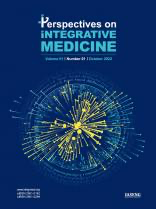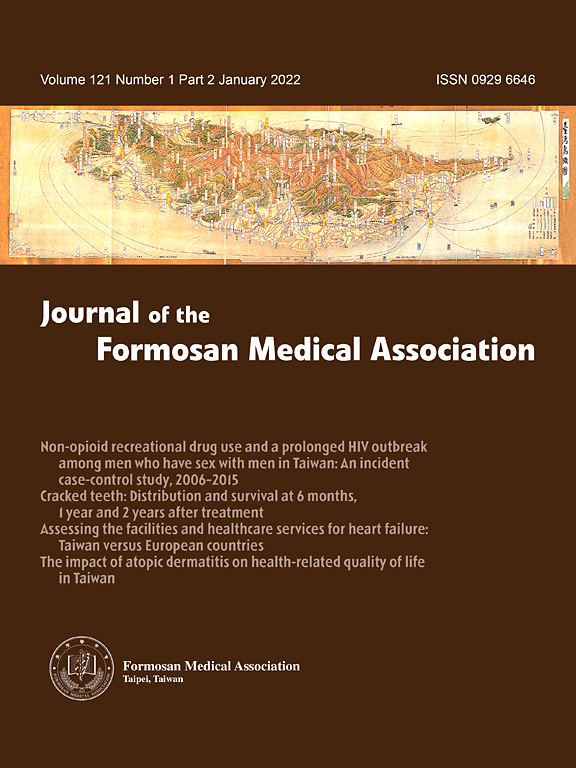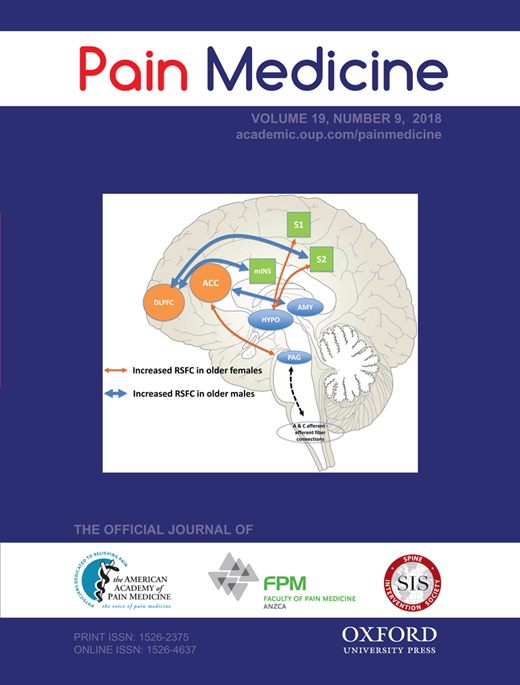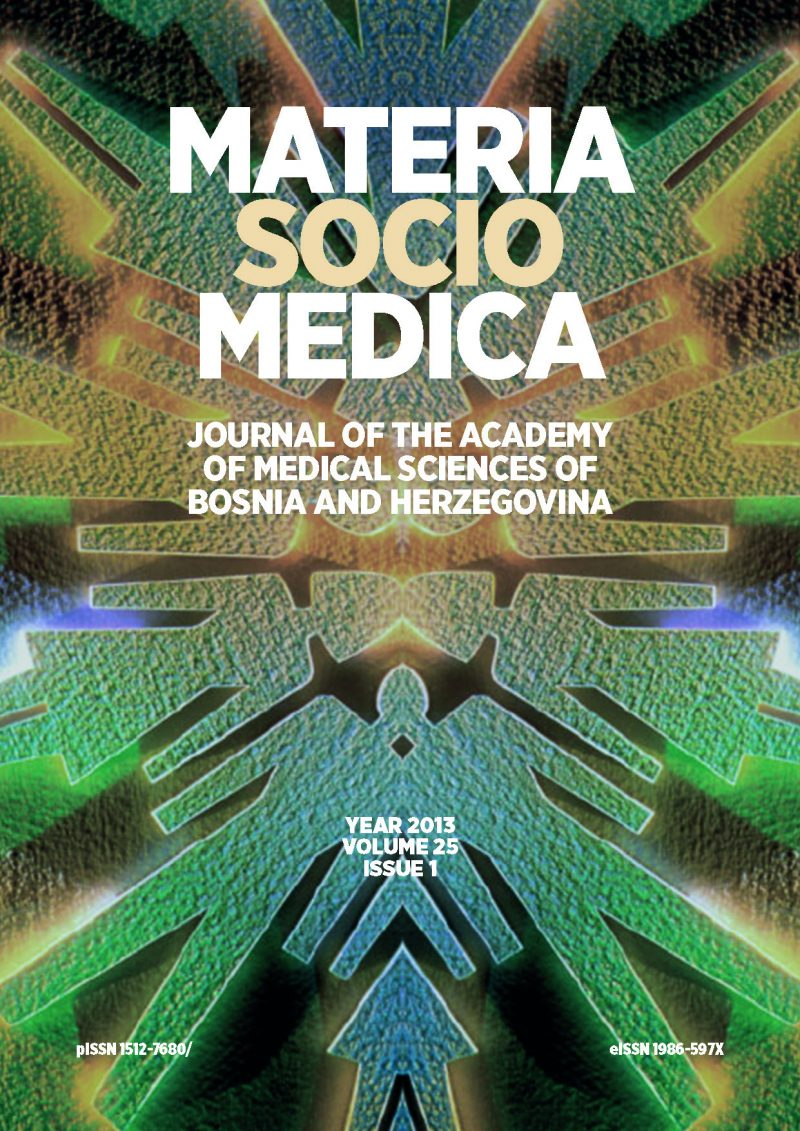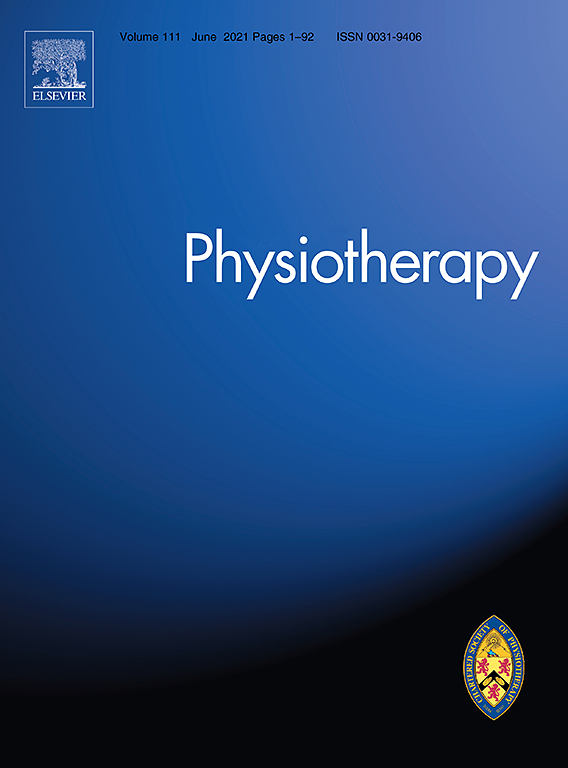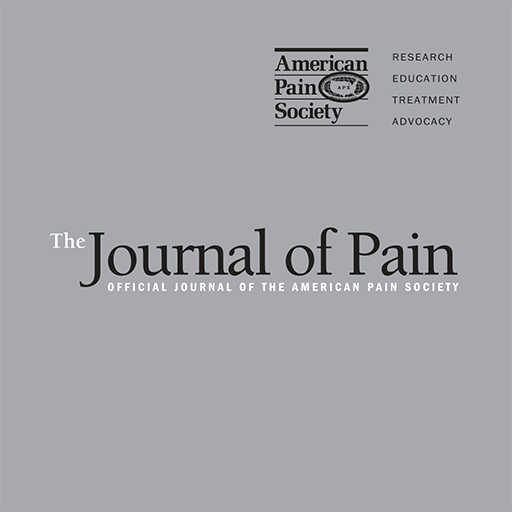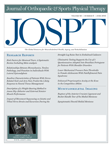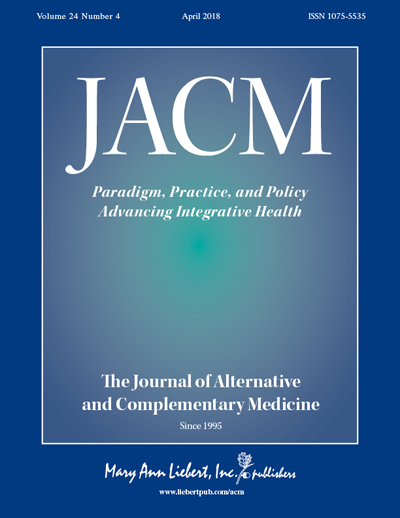Presentation Slides
Chinese Medicine Research Hub
Randomised Controlled Trial
Auricular acupuncture relieved pain and decreased disability more effectively than physiotherapy for frozen shoulder treatment.
2023 Topics in Geriatric Rehabilitation Physiotherapy, Local Acupuncture, and Auricular Acupuncture for Frozen Shoulder
Hollisaz MT, Khatibi Aghda A, Asheghan M, Amanollahi A, Hashemi SE
Chinese Medicine Research Hub
Practice Guideline
Acupuncture is safe and may be a cost-effective treatment for shoulder pain.
2022 Perspectives on Integrative Medicine Shoulder Pain and the Potential Role of Acupuncture: A Narrative Review of Clinical Practice and Treatment Guidelines
Birch S, Lee MS, Kim TH, Alraek T
Chinese Medicine Research Hub
Systematic Review
Electroacupuncture may be more effective than manual acupuncture for managing frozen shoulder, with larger effect sizes in terms of pain, function, and response rate.
2022 Frontiers in Medicine Electroacupuncture for the treatment of frozen shoulder: A systematic review and meta-analysis
Heo JW, Jo JH, Lee JJ, Kang H, Choi TY, Lee MS, Kim JI
Chinese Medicine Research Hub
Review Article
Acupuncture has been shown to significantly improve pain, disability, and quality of life for patients with shoulder impingement syndrome.
2021 Journal of Acupuncture Research Acupuncture Treatment for Shoulder Impingement Syndrome: A Review of Randomized Controlled Trials
Park JE, Kim WY, Lee SJ, Oh DY, Lee MC, Jeon MK, Kim HJ, Ahn JY, Yang SH, Choi YY, Shin NY, Nam HJ
Chinese Medicine Research Hub
Review Article
Acupuncture, in its various forms, shows significant potential in alleviating pain and improving shoulder function in patients with rotator cuff disorders.
2021 Journal of Acupuncture Research Acupuncture for Symptomatic Rotator Cuff Disease: A Systematic Review and Meta-Analysis
Choi S, Lee J, Lee S, Yang GY, Kim KH
Chinese Medicine Research Hub
Systematic Review
Acupuncture could be safe and effective for pain reduction, restoring shoulder function, and restoring flexion range of motion for frozen shoulder patients in the short term and midterm.
2020 Evidence-Based Complementary and Alternative Medicine The Effectiveness of Acupuncture in the Treatment of Frozen Shoulder: A Systematic Review and Meta-Analysis
Ben-Arie E, Kao PY, Lee YC, Ho WC, Chou LW, Liu HP
Chinese Medicine Research Hub
Randomised Controlled Trial
Electroacupuncture plus rehabilitation may provide earlier pain relief for patients with frozen shoulder syndrome and could be applied clinically.
2020 Journal of the Formosan Medical Association The effect of electroacupuncture merged with rehabilitation for frozen shoulder syndrome: A single-blind randomized sham-acupuncture controlled study
Lo MY, Wu CH, Luh JJ, Wang TG, Fu LC, Lin JG, Lai JS
Chinese Medicine Research Hub
Acupuncture therapy offered in the group setting was effective in reducing pain severity, pain interference, and depression in patients with chronic neck, back, or shoulder pain or osteoarthritis.
2018 Pain Medicine Acupuncture Therapy in a Group Setting for Chronic Pain
Benjamin Kligler, Arya Nielsen, Corinne Kohrherr,, Tracy Schmid, Eve Waltermaurer, Elidania Perez, Woodson Merrell
Chinese Medicine Research Hub
Systematic Review
Most studies reviewed concluded that conventional and electroacupuncture could be effective for management of shoulder pain after stroke.
2018 Frontiers in Neurology Effects of Acupuncture on the Recovery Outcomes of Stroke Survivors with Shoulder Pain: A Systematic Review
Chau JPC, Lo SHS, Yu X, Choi KC, Lau AYL, Wu JCY, Lee VWY, Cheung WHN, Ching JYL, Thompson DR
Chinese Medicine Research Hub
Systematic Review
Acupuncture combined with physiotherapy or exercise was found to be more effective for frozen shoulder than physiotherapy or exercise alone in the short and long term.
2017 Physiotherapy Effectiveness of acupuncture in the treatment of shoulder pain: a systematic review of published randomised clinical trials
A. Rubio M. Mansfield J. Lewis
Chinese Medicine Research Hub
Systematic Review
Acupuncture has a clinically relevant effect on chronic pain that persists over time. Referral for acupuncture treatment is a reasonable option for chronic pain patients.
2017 The Journal of Pain Acupuncture for Chronic Pain: Update of an Individual Patient Data Meta-Analysis
Vickers, Andrew J. et al.
Chinese Medicine Research Hub
Randomised Controlled Trial
Our study provides evidence that acupuncture has a specific impact on frozen shoulder beyond the placebo effects that may not only be beneficial in reducing short-term pain perception, but may also have a positive long-term influence on the time course of recovery.
2017 Pain Medicine Immediate Pain Relief in Adhesive Capsulitis by Acupuncture—A Randomized Controlled Double-Blinded Study
Schröder S, Meyer-Hamme G, Friedemann T, Kirch S, Hauck M, Plaetke R, Friedrichs S, Gulati A, Briem D
Chinese Medicine Research Hub
Systematic Review
Acupuncture, in combination with regular rehabilitation, may effectively alleviate poststroke shoulder pain more than rehabilitation alone.
2016 Evidence-Based Complementary and Alternative Medicine Acupuncture for Poststroke Shoulder Pain: A Systematic Review and Meta-Analysis
Lee, S.-H., & Lim, S. M.
Chinese Medicine Research Hub
Systematic Review
Acupuncture, specifically needle-based and electroacupuncture, can potentially provide therapeutic benefits for carpal tunnel syndrome, Achilles tendinopathy, and shoulder injuries.
2016 Journal of Orthopaedic & Sports Physical Therapy Effectiveness of Acupuncture Therapies to Manage Musculoskeletal Disorders of the Extremities: A Systematic Review
Cox, J., Varatharajan, S., Côté, P., & Optima Collaboration
Chinese Medicine Research Hub
Randomised Controlled Trial
Acupuncture may enhance shoulder movement and relieve pain more effectively than standard treatment in patients suffering from adhesive capsulitis, also known as a frozen shoulder.
2016 Materia Socio Medica Investigation of the Effectiveness of Acupuncture in the Treatment of Frozen Shoulder
Asheghan M, Aghda A, Hashemi E, Hollisaz M
Chinese Medicine Research Hub
Systematic Review
Acupuncture combined with exercise is effective for shoulder pain after stroke.
2012 The Journal of Alternative and Complementary Medicine Acupuncture for Shoulder Pain After Stroke: A Systematic Review
Jung Ah Lee, Si-Woon Park, Pil Woo Hwang, Sung Min Lim, Sejeong Kook, Kyung In Choi, and Kyoung Sook Kang.
Executive Summary
Write an executive summary in the form of a blog article on the topic of "Research into Chinese medicine treatment for Shoulder Pain" summarising the research below and using language that can be easily understood by patients and avoiding medical jargon using a professional and caring tone of voice.
Write an executive summary in the form of a blog article on the topic of "Researched Chinese medicine treatments for Shoulder Pain" summarising the research below in an objective and easy to understand way, and using language that can be easily understood by patients. Group the article into Chinese medicine treatments first, followed by nutrition and other treatments. Avoid using medical jargon and use a professional and caring tone of voice.
Write me a concise but easy to understand executive summary on the topic of "Chinese medicine treatments for Shoulder Pain" based on the following research that I will give you. Your summary should be 2 paragraphs long in Australian English spelling and include references to the studies.
A Randomised Controlled Trial published in 2023 in the journal Topics in Geriatric Rehabilitation found that Auricular acupuncture relieved pain and decreased disability more effectively than physiotherapy for frozen shoulder treatment. The research was conducted through a randomized clinical trial involving three parallel groups in an outpatient clinic at a university hospital. The 116 participants, suffering from a frozen shoulder, were randomly allocated to three groups where they underwent treatments of physiotherapy, local acupuncture, or auricular acupuncture. Assessment tools like the Shoulder Pain and Disability Index questionnaire and measures of the shoulder's active and passive ranges of motion were used to evaluate the effects of treatments both before and after their implementation.
The results of the study revealed that the most substantial improvements in active and passive ranges of motion including abduction, flexion, and passive external rotation were brought about by physiotherapy. Despite this, instances of pain reduction were more successfully achieved with acupuncture treatments, with auricular acupuncture leading the pack. In addition to this, auricular acupuncture made significant strides in improving the functional abilities of patients when compared to its counterpart treatments. Throughout the study, there were no reported side effects from any of the treatment approaches used.
A Practice Guideline published in 2022 in the journal Perspectives on Integrative Medicine found that Acupuncture is safe and may be a cost-effective treatment for shoulder pain. There were 131 statements recommending the use of acupuncture for shoulder pain across 12 subtypes of shoulder pain. The most common statements were for non-specific ‘shoulder pain.’ There were 11 statements against the use of acupuncture for shoulder pain and three subtypes of shoulder pain. The level of evidence in studies of acupuncture treatment for shoulder pain is low, therefore, further research is needed. Recommendations for the use of acupuncture for shoulder pain are increasing but lag behind those for other pain problems such as low back pain.
A Systematic Review published in 2022 in the journal Frontiers in Medicine found that Electroacupuncture may be more effective than manual acupuncture for managing frozen shoulder, with larger effect sizes in terms of pain, function, and response rate. This review included thirteen studies involving 936 patients. The EA group exhibited improvements in FS pain, function, and response rates over the manual acupuncture (MA) group. As an adjunct treatment, EA improved FS pain compared to the control treatments. No adverse effects were reported.
EA was found to be an efficacious method for treating FS in this review. The meta-analysis showed that EA led to a greater reduction of FS pain than MA did, although with a very low certainty of evidence. In comparison to MA, EA led to a superior degree of functional improvement in FS patients, with a very low certainty of evidence. In comparison to MA, EA enhanced the response rate of FS, again with a low certainty of evidence. Compared with WM used in isolation, EA plus WM reduced FS pain with a low certainty of evidence.
A Review Article published in 2021 in the journal Journal of Acupuncture Research found that Acupuncture has been shown to significantly improve pain, disability, and quality of life for patients with shoulder impingement syndrome. The research methodology involved a literature review of randomized controlled trials where acupuncture was used as an intervention for patients diagnosed with shoulder impingement syndrome. Relevant clinical studies were retrieved from several databases based on specific inclusion and exclusion criteria, and the interventions used, and results obtained were diligently analyzed. Six of these studies were chosen for an extensive review based on the stringent parameters defined.
The results of these six studies testify to the apparent efficacy of acupuncture as a treatment for shoulder impingement syndrome. Upon analysis, the acupuncture treatment group consistently demonstrated significant positive changes in metrics evaluating pain, disability, and quality of life. There was an observed decrease in evaluative indicators such as Shoulder Pain and Disability Index, Numeric Rating Scale, Visual Analogue Scale, and others, and a considerable increase in the scores of the self-reported questionnaires like UCLA, AL-score, EuroQol 5 Dimension, and more. One study even reported acupuncture's effectiveness to be on par with corticosteroid injections in terms of improvements in pain and quality of life measures. Notably, no major side effects from acupuncture were reported across the studies.
A Review Article published in 2021 in the journal Journal of Acupuncture Research found that Acupuncture, in its various forms, shows significant potential in alleviating pain and improving shoulder function in patients with rotator cuff disorders. The participating researchers examined a multitude of sources, involving 12 electronic databases and 3 trial registries until November 2019, poring over any applicable randomized trial regardless of its language or date of publication. The research primarily focused on pain symptoms, the functionality of the shoulder, and the ratio of participants showing improvement within 12 weeks since the initiation of the trial. They adopted the Grading of Recommendations Assessment, Development and Evaluation approach to assess the certainty of evidence, while the included studies' bias risks were evaluated using the Cochrane risk of bias tool. Various types of acupuncture were evaluated, including manual acupuncture, dry needling, electroacupuncture, acupotomy, warm needle acupuncture and fire needle acupuncture, extracted from a total of 28 randomized trials involving 2,216 participants.
The results gleaned from these trials suggest that acupuncture could indeed have a significant impact on the relief of pain and the enhancement of shoulder function for patients suffering from rotator cuff diseases. However, discrepancies between the trials resulted in considerable heterogeneity. Despite this, no significant harm was observed amongst the patients. However, due to the level of uncertainty associated with the data and the partialness of the reports, the safety of acupuncture is still up for debate.
A Systematic Review published in 2020 in the journal Evidence-Based Complementary and Alternative Medicine found that Acupuncture could be safe and effective for pain reduction, restoring shoulder function, and restoring flexion range of motion for frozen shoulder patients in the short term and midterm. In this systematic review and a meta-analysis, acupuncture had shown to be a safe treatment with a significant effect in regard to reducing pain, improving shoulder function, and flexion ROM in the short term and midterm. However, due to the small number of included studies and methodological limitations in these studies, more large-scale high-quality RCTs are warranted in order to give a robust conclusion. Future studies should compare acupuncture to other treatments and sham acupuncture. Additionally, longer follow-up time is needed for investigating the effect of acupuncture in the mid- and long term, and the duration of future FS studies follow-up should be increased to one year.
A Randomised Controlled Trial published in 2020 in the journal Journal of the Formosan Medical Association found that Electroacupuncture plus rehabilitation may provide earlier pain relief for patients with frozen shoulder syndrome and could be applied clinically. This clinical trial investigated the short and medium-term effects of true and sham electroacupuncture on people with frozen shoulder syndrome (FSS). The study included 21 participants who were randomly divided into two groups: a true electroacupuncture group and a sham electroacupuncture group. Both groups received 18 sessions of treatment over 6-9 weeks and were then followed up for 1, 3, and 6 months. The results showed that both groups had lasting effects at 1, 3, and 6 months, but the true electroacupuncture group showed earlier pain relief and more improvement in shoulder mobility. Overall, the study suggests that electroacupuncture plus rehabilitation may provide early pain relief for FSS patients and may have clinical applications.
A published in 2018 in the journal Pain Medicine found that Acupuncture therapy offered in the group setting was effective in reducing pain severity, pain interference, and depression in patients with chronic neck, back, or shoulder pain or osteoarthritis. Subjects received eight weekly acupuncture therapy sessions in a group setting. Acupuncture therapy included a combination of palpation, acupuncture needling, Tui na, Gua sha, and auricular treatment. Baseline pain levels were established in a two- to four-week run-in; assessment of the intervention impact on pain intensity, mood, and functional status were made at the end of the treatment period (eight weeks) and 16 weeks after completion of intervention (24 weeks).
Of the total 113 participants recruited for the trial, 96 completed the 24-week protocol. We found a statistically and clinically significant decrease in pain severity, pain interference, and depression in our study population. There were no serious adverse events.
Acupuncture therapy offered in the group setting was effective in reducing pain severity, pain interference, and depression in patients with chronic neck, back, or shoulder pain or osteoarthritis. Benefit persisted through the 24-week measure despite no additional treatment. This finding has potentially important implications for improving access to effective acupuncture treatment for patients with limited financial resources.
A Systematic Review published in 2018 in the journal Frontiers in Neurology found that Most studies reviewed concluded that conventional and electroacupuncture could be effective for management of shoulder pain after stroke. This review suggests that conventional acupuncture and electroacupuncture could be effective treatments for survivors with poststroke shoulder pain, with regard to reducing pain and improving upper extremity function and physical function. However, the results of this review should be interpreted with consideration of its limitations.
A Systematic Review published in 2017 in the journal Physiotherapy found that Acupuncture combined with physiotherapy or exercise was found to be more effective for frozen shoulder than physiotherapy or exercise alone in the short and long term. Shoulder pain is a leading musculoskeletal pain complaint, and is responsible for high morbidity with marked impact on quality of life. Acupuncture is a modality commonly employed in the treatment of shoulder conditions; however, past systematic reviews investigating its effectiveness have been inconclusive, noting a paucity of good quality research. A new body of research has since been published, and is included within this review. The objective of this systematic review was therefore to investigate the current evidence base for the effectiveness of acupuncture in the treatment of shoulder pain.
A Systematic Review published in 2017 in the journal The Journal of Pain found that Acupuncture has a clinically relevant effect on chronic pain that persists over time. Referral for acupuncture treatment is a reasonable option for chronic pain patients. We included randomized trials of acupuncture needling versus either sham acupuncture or no acupuncture control for nonspecific musculoskeletal pain, osteoarthritis, chronic headache, or shoulder pain. Trials were only included if allocation concealment was unambiguously determined to be adequate. Raw data were obtained from study authors and entered into an individual patient data meta-analysis. The main outcome measures were pain and function. An additional 13 trials were identified, with data received for a total of 20,827 patients from 39 trials. Acupuncture was superior to sham as well as no acupuncture control for each pain condition (all P < .001) with differences between groups close to .5 SDs compared with no acupuncture control and close to .2 SDs compared with sham. We also found clear evidence that the effects of acupuncture persist over time with only a small decrease, approximately 15%, in treatment effect at 1 year.
Acupuncture is effective for the treatment of chronic musculoskeletal, headache, and osteoarthritis pain. Treatment effects of acupuncture persist over time and cannot be explained solely in terms of placebo effects. Referral for a course of acupuncture treatment is a reasonable option for a patient with chronic pain.
A Randomised Controlled Trial published in 2017 in the journal Pain Medicine found that Our study provides evidence that acupuncture has a specific impact on frozen shoulder beyond the placebo effects that may not only be beneficial in reducing short-term pain perception, but may also have a positive long-term influence on the time course of recovery. Primary adhesive capsulitis ("frozen shoulder") is a common disorder associated with pain and significant morbidity in humans worldwide. This first double-blinded (patient- and observer-blinded) study in patients with AC showed the efficiency of our special distal needling protocol by systematic combination of acupoints for immediate pain reduction. The study also confirmed the suitability of press tack needles and press tack placebos as an effective option for double-blind studies in acupuncture. The follow-up clinical observation with classical needle acupuncture confirmed that results obtained with the press tack placebos/press tack needles design can be transferred to classical needle acupuncture. Furthermore, conservative therapy that included acupuncture represented a superior effectiveness on the time course of recovery in AC patients compared with patients treated with conservative therapy alone in a standard clinical setting.
A Systematic Review published in 2016 in the journal Evidence-Based Complementary and Alternative Medicine found that Acupuncture, in combination with regular rehabilitation, may effectively alleviate poststroke shoulder pain more than rehabilitation alone. The study utilized seven databases to find existing research studies concerning the use of acupuncture in relieving poststroke shoulder pain, with no language limitations imposed on the search. The primary focus was on randomized controlled trials that compared the impact of acupuncture with conventional controls. The Visual Analogue Scale (VAS) and Fugl-Meyer Assessment (FMA) were primarily used to measure the extent of the pain and effectiveness of the treatments.
The results of the analysis of these studies suggested a definitive trend indicating the adoption of acupuncture alongside regular rehabilitation treatment enhanced the remedial effect on poststroke shoulder pain. The reduction in pain as reported by the VAS, improvements in the FMA, and overall efficacy rates showed a marked improvement when acupuncture was incorporated with the standard rehabilitation treatments when compared to those treatments on their own. However, the study does acknowledge that while the results point towards the effectiveness of acupuncture, the results should be interpreted with caution.
A Systematic Review published in 2016 in the journal Journal of Orthopaedic & Sports Physical Therapy found that Acupuncture, specifically needle-based and electroacupuncture, can potentially provide therapeutic benefits for carpal tunnel syndrome, Achilles tendinopathy, and shoulder injuries. Methodology: The researchers executed a systematic review on multiple databases such as MEDLINE, Embase, CINAHL, PsycINFO, and Cochrane Central Register of Controlled Trials covering a period from 1990 to 2015. Their search was focused on identifying responsive randomized controlled trials, cohort studies, and case-control studies which focused on the effectiveness and safety of acupuncture therapies for musculoskeletal disorders. The Scottish Intercollegiate Guidelines Network criteria was used to evaluate the eligible studies. Furthermore, best-evidence synthesis was performed to sum up results from studies with low bias risk. A sensitivity analysis was also performed to comprehend the potential impact of excluding studies with high bias risk.
Results: The comprehensive review identified 5180 articles, from which 15 were selected for final analysis (10 had a low risk of bias and 5 with a high risk of bias). Among other findings, the results showed that traditional needle acupuncture may outperform oral steroids and vitamin B1/B6 supplements for carpal tunnel syndrome and exercises for Achilles tendinopathy. Moreover, electroacupuncture might be superior than placebo for shoulder injuries. The extent of benefits offered by dry needling for plantar fasciitis remained equivocal. Traditional needle acupuncture didn't show significant advantage over placebo for upper extremity pain, or no intervention for patellofemoral pain, and findings for shoulder pain were inconclusive.
A Randomised Controlled Trial published in 2016 in the journal Materia Socio Medica found that Acupuncture may enhance shoulder movement and relieve pain more effectively than standard treatment in patients suffering from adhesive capsulitis, also known as a frozen shoulder. In the methodology utilized, a controlled clinical trial was conducted on 40 patients diagnosed with frozen shoulder who were referred to a health clinic. Diagnostic measures included assessing variables such as joint pain, range of motion, and quality of life. Data was collected through pre-determined questionnaires at baseline, one and a half months later (end of the session), and then three months after the examination.
In terms of results, a comparison of the intervention group treated with acupuncture and the control group revealed significant improvements in shoulder movement, particularly flexion and adduction. Additionally, the Visual Analog Scale (VAS) index, showing the level of pain, indicated greater improvements in the acupuncture group three months after the treatment. Overall, the acupuncture group showed higher enhancement in shoulder motion, suggesting acupuncture as a potent treatment method for frozen shoulder.
A Systematic Review published in 2012 in the journal The Journal of Alternative and Complementary Medicine found that Acupuncture combined with exercise is effective for shoulder pain after stroke. It was found in this review of reported RCTs that acupuncture is an effective treatment for shoulder pain after stroke. Acupuncture can be considered as an adjuvant therapy in combination with exercise for rehabilitation of the stroke patients who are suffering from shoulder pain. Further trials concerning this topic should be conducted according to the highest methodological standards for certainty.

